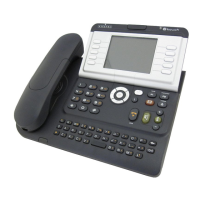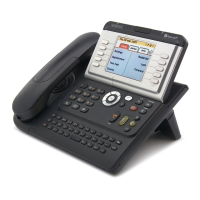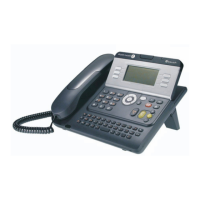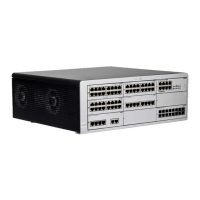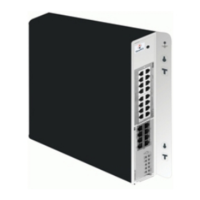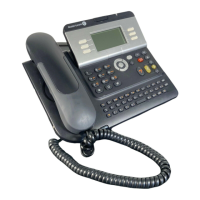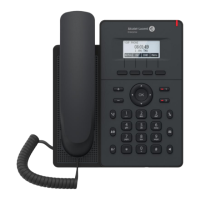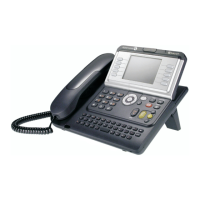transfer
hold
redial
end
Getting to know your telephone
4
Receiver
Socket for connecting headphones or a
handsfree/speaker unit
Audio keys
END key:
to terminate a call.
Handsfree/Speaker Key:
to make or answer a call without lifting the receiver.
• lit in handsfree mode or headset mode (short press).
• flashing in speaker mode (long press).
Intercom/Mute key:
• During a call: press this key so that your party cannot hear you.
• Terminal idle: press this key so that you can automatically answer a call without
lifting the receiver.
To adjust the speaker or receiver volume up or down
.
Extension unit
An extension unit can be fitted to your telephone. This provides addi-
tional keys which can be configured as feature keys, line keys, call keys
etc.
To affix labels:
push the holding strip of the unit backwards to you and
lift it. Install the label under the keypad, in the housing designed for, and
place the keypad back into position.
Three-colour indicator light
The indicator light on your terminal enables you to monitor the system. The light has five possible statuses (colours and/or flashing):
Flashing green
: message received (voice or screen) or call received in the “ calls received ” memory.
Orange fixed
: indicates traffic overload level 1 (1 is calls on hold).
Flashing orange
: terminal on test.
Red fixed
: indicates traffic overload level 2 (call unanswered within 20 seconds or number of calls on hold exceeds number of attendant
stations).
Flashing red
: several low priority system messages present or one very serious system message indicating a system hardware fault.
Alphabetic keypad
Display and display keys
Contains several lines and pages providing information on calls and the features accessible via the 10 keys associated with the words on the
screen.
Forward icon:
pressing the key next to this icon allows you to program or change the forward feature.
Receiver connected.
Appointment programmed.
Silent mode enabled.
Telephone locked.
Display keys:
pressing a display key activates the feature shown associated with it on the screen.
Navigation
OK key:
used to validate your choices and options while programming or configuring.
Left-right navigator:
used to move from one page to another.
Up-down navigator:
used to scroll through the content of a page.
Back/Exit key:
to return to previous menu (short press) or return to first screen (long press) ; during a conversation,
provides access to welcome screens (Menu, Info, ...) and to return to the conversation icon screens.
Call display
Incoming call.
Call in progress or outgoing call.
Call on hold.
If you get two calls at the same time, you can switch from one call to the
other by pressing the display key associated with each call.
Left-right navigator:
used to check calls.
Feature keys and programmable keys
Guide key:
used to obtain information on features of the 'menu' page and to program key of the 'main' page.
Messaging key to access various mail services
If the key flashes, a new voice message or a new text message has been received.
'Redial' key :
to access the 'Redial' feature.
Hold and transfer (F1 and F2 keys):
lit when the feature associated with the key is activated.
Some other keys have been programmed by your technician for your own convenience:
Key must be programmed by your technician to access a service.
Adjust the tilt of the screen
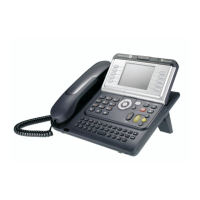
